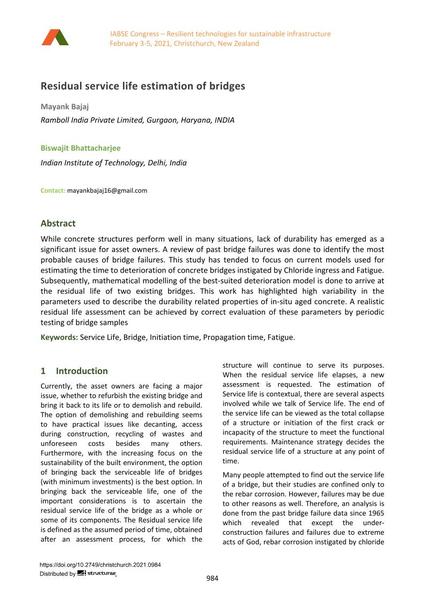Residual service life estimation of bridges

|
|
|||||||||||
Détails bibliographiques
| Auteur(s): |
Mayank Bajaj
(Ramboll India Private Limited, Gurgaon, Haryana, INDIA)
Biswajit Bhattacharjee (Indian Institute of Technology, Delhi, India) |
||||
|---|---|---|---|---|---|
| Médium: | papier de conférence | ||||
| Langue(s): | anglais | ||||
| Conférence: | IABSE Congress: Resilient technologies for sustainable infrastructure, Christchurch, New Zealand, 3-5 February 2021 | ||||
| Publié dans: | IABSE Congress Christchurch 2020 | ||||
|
|||||
| Page(s): | 984-991 | ||||
| Nombre total de pages (du PDF): | 8 | ||||
| DOI: | 10.2749/christchurch.2021.0984 | ||||
| Abstrait: |
While concrete structures perform well in many situations, lack of durability has emerged as a significant issue for asset owners. A review of past bridge failures was done to identify the most probable causes of bridge failures. This study has tended to focus on current models used for estimating the time to deterioration of concrete bridges instigated by Chloride ingress and Fatigue. Subsequently, mathematical modelling of the best-suited deterioration model is done to arrive at the residual life of two existing bridges. This work has highlighted high variability in the parameters used to describe the durability related properties of in-situ aged concrete. A realistic residual life assessment can be achieved by correct evaluation of these parameters by periodic testing of bridge samples |
||||
| Mots-clé: |
pont
|
||||
